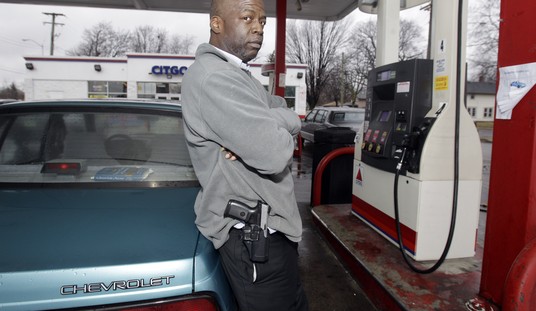In my time at Bearing Arms, just over two years now, I’ve had occasion to write about the anti-gun site, The Trace from time to time. Usually, I’m taking issue with something they said, or occasionally pointing out how something they found disproves the idea that gun control works. I’ve jokingly referred to them as the anti-Bearing Arms to some.
But I’ll give them due when I feel like they get it right.
“Tom, you’ve never given them anything like that,” someone might say, and they’d be right. They haven’t done anything I felt warranted it.
That is, until now.
You see, over at The Trace, they seem to understand one thing that is very important when it comes to mass shootings. They understand that the media plays a role, and it’s time for that to change.
America has entered a new age of mass shootings. Every few weeks — or hours, in the case of El Paso and Dayton — a young man with a gun commits an atrocity. And every time it happens, news media are there to relentlessly cover the aftermath. Each new detail — a killer’s name, a photograph — becomes a prize in the frenzied effort to obtain and confirm the next.
We do this, in part, because it’s our job. The public wants to know what happened and why. They want to know more about the person capable of carrying out such a heinous act. As journalists, we try to meet our audiences’ needs for information. And with competition for attention so intense, we’re reluctant to forego even the smallest developments in a big, breaking story.
But our approach also stems from the fact that the news industry hasn’t seriously reckoned with its responsibility to cover mass shootings with the discretion they require. If we don’t change that soon, we risk further contributing to the uniquely American crisis of mass killings.
Research increasingly tells us that our coverage of mass shootings has implications for public health. Shooters crave attention and infamy; several modern killers have idolized and sought out information about those who came before them. One murderer mailed videos and documents to a national news station, knowing that the materials would be publicized. Another kept a spreadsheet in which he compared body counts from previous high-profile shootings.
Writers Miles Kohrman and Katherine Reed are absolutely right about this. While I’m sure we agree on very little when it comes to the subject of guns, on this we find ourselves in total agreement.
The role the media plays in these sorts of shootings is probably far more extensive than many have been willing to accept. Couple that with the click-focused way media interacts with the public on the internet and the problem will continue to perpetuate itself. Killer shoots a bunch of people, then the media starts diving into his life, his family, they turn him into a hero for the disaffected.
Some of us, however, are already trying to address this, which Kohrman and Reed acknowledged. For example, we don’t name the killers here. CNN’s Anderson Cooper doesn’t either. There are a number of others who won’t. But it’s not enough.
The problem is that there are no journalistic “best practices” in place to address this. Journalistic ethics that have been in existence for decades are not equipped for the post-Columbine world.
And that’s where The Trace is doing something I fully support and would be willing to help with in any way.
The Trace, in partnership with the Donald W. Reynolds Journalism Institute at the Missouri School of Journalism, is committed to finding a way to keep the public informed about mass shootings without compromising public safety. Over the coming months, our coalition will work with researchers and media professionals who study the phenomenon of mass-shooting contagion to paint a fuller picture of the problem. Along with news organizations across the country, we will develop a set of guidelines for responsible reporting on mass shooters and their motives. Once we release those guidelines, we will urge news organizations to publicly ratify them, formalizing a set of industry best practices.
Of course, they don’t have those guidelines in place at the moment and Korhman and Reed say it’s premature to speculate on what those would look like. I look forward to seeing them when they’re ready.
The question is, how many other journalists will actually follow them?








Join the conversation as a VIP Member